A rich, clear broth simmered from pork bones, daikon, and Thai aromatics — this Thai Pork Stock (น้ำซุปกระดูกหมู) is the backbone of countless Thai soups and noodle dishes. It’s comforting, simple, and naturally full of flavor.
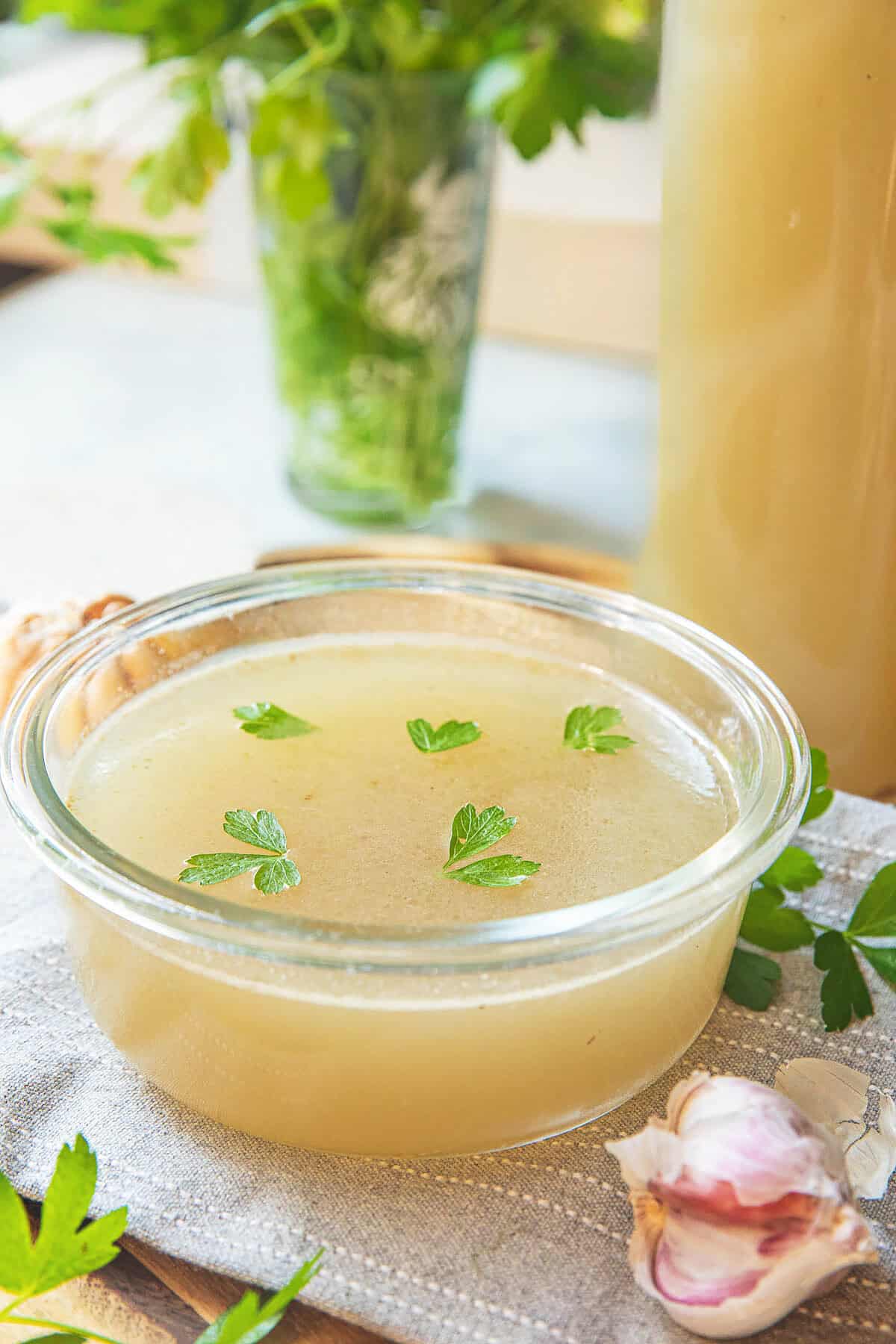
This broth is easy to make, freezer-friendly, and adds authentic Thai flavor to soups, curries, or stir-fried noodles. Using pork bones creates natural richness and depth — no MSG or store-bought stock cubes needed.
Use this homemade Thai pork stock as the flavorful base for many of my recipes, like Thai winter melon soup, Thai Pumpkin Soup, Thai bitter melon soup, Thai Gaeng Jeud, and Tom Saap (Spicy Pork Bone Soup). It’s also perfect for any dish on my blog that calls for broth or stock, adding rich, authentic Thai depth every time.
Jump to:
What is Thai Pork Stock?
In Thai cooking, pork stock — called Nam Soup Moo — is a staple used in noodle soups, rice porridge (jok), and many street food dishes.
It’s made by slowly simmering pork bones with onions, garlic, white peppercorns, cilantro roots, and coriander seeds. The result is a light but deeply aromatic broth that tastes comforting, savory, and just a little sweet from the vegetables.
Ingredients
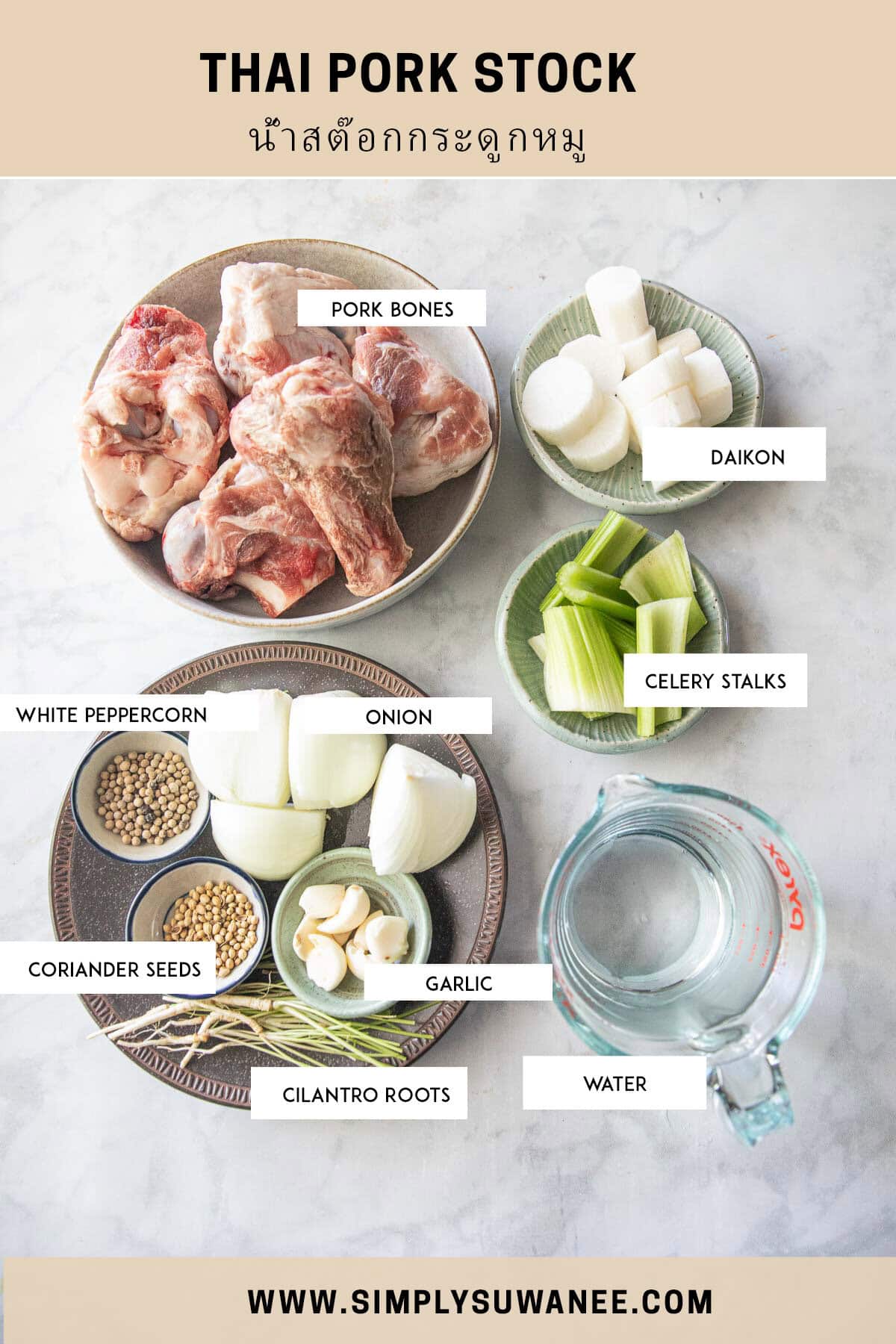
- Pork bones. Use a mix of neck bones, leg bones, or pork spine — the marrow adds flavor and body.
- Water. Enough to fully cover the bones (about 14–16 cups).
- Cilantro roots. Traditional Thai ingredient that adds bright, earthy flavor. Use stems if roots aren’t available.
- Daikon. Adds subtle sweetness and keeps the broth clear.
- Onion. Balances the pork’s richness with gentle sweetness.
- Celery stalks. Add a light herbal note and freshness.
- Garlic. Use whole cloves — they melt into the broth for savory depth.
- Coriander seeds. Add subtle citrusy flavor.
- White peppercorns. Give that signature Thai warmth and peppery aroma.
Pork Bone Tips!
- For the best flavor, use pork neck or leg bones with a bit of meat still attached — they create a rich, balanced broth. Skip pure fat bones, as they can make your stock greasy instead of flavorful.
- Pork ribs work beautifully, too! They add a touch of sweetness and plenty of meat for snacking later. For the best flavor, combine ribs with neck or leg bones — the mix gives you both richness from the bones and tenderness from the meat.
How to Make Thai Pork Stock
- Add aromatics and water. In a clean, large pot, add blanched bones, daikon, onion, celery, garlic, coriander seeds, white peppercorns, and cilantro roots. Pour in 18 cups of fresh water.
- Simmer slowly. Bring to a gentle boil, then lower the heat and simmer uncovered for 2½–3 hours. Skim off any foam that rises to the top as needed.
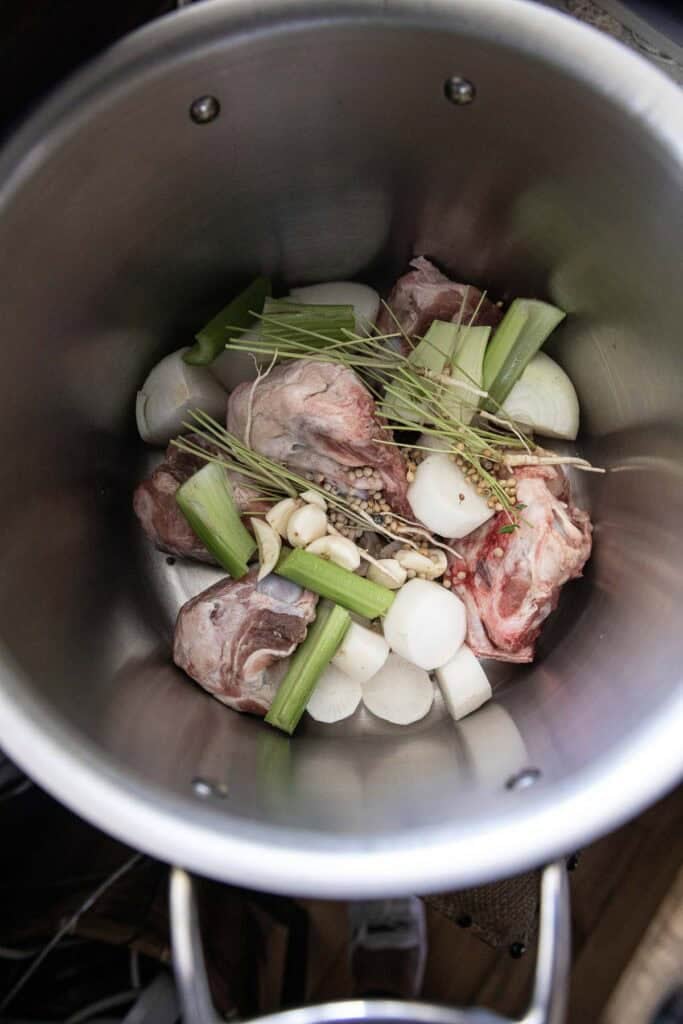
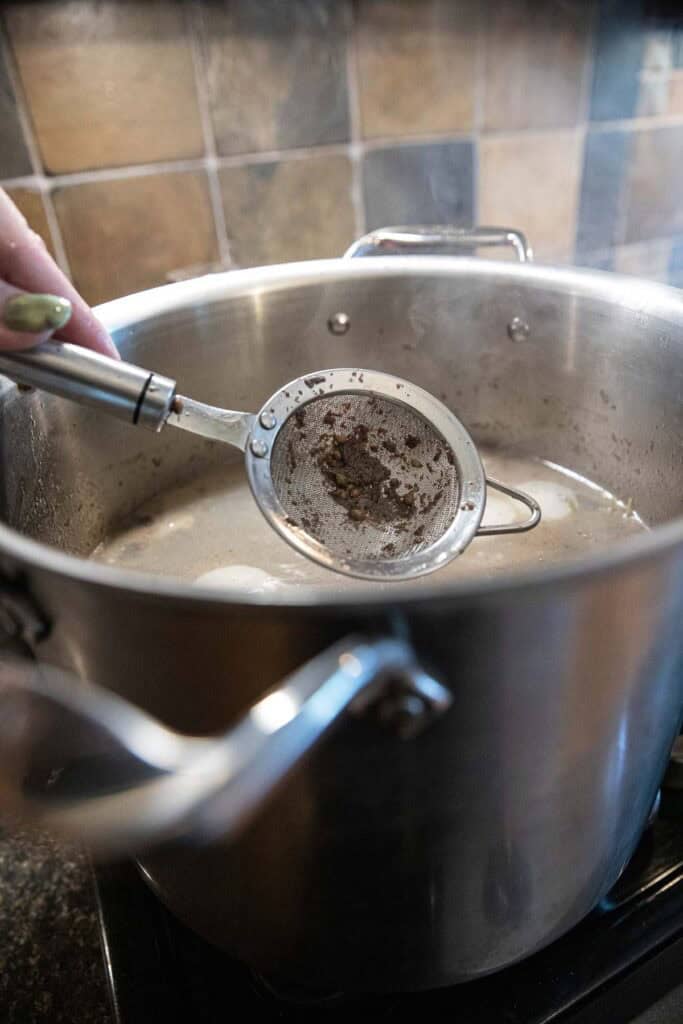
- Strain. When the broth looks golden and clear, strain through a fine mesh sieve to remove solids.
- Cool and store. Let the stock cool completely before transferring it to jars or containers. Discard the solids or pick off any meat for other dishes.
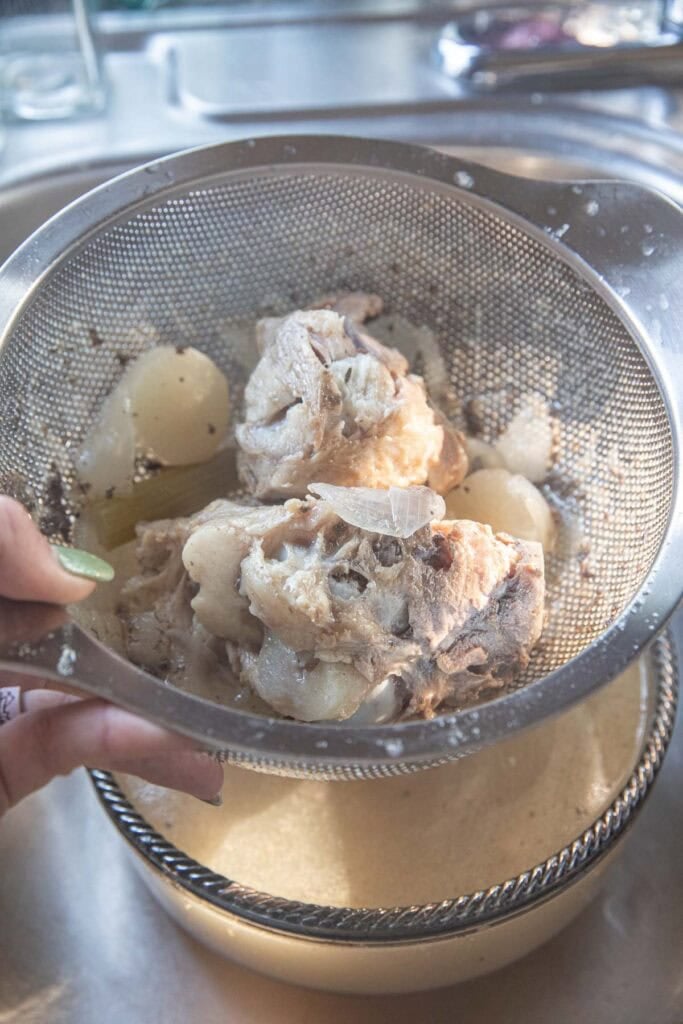
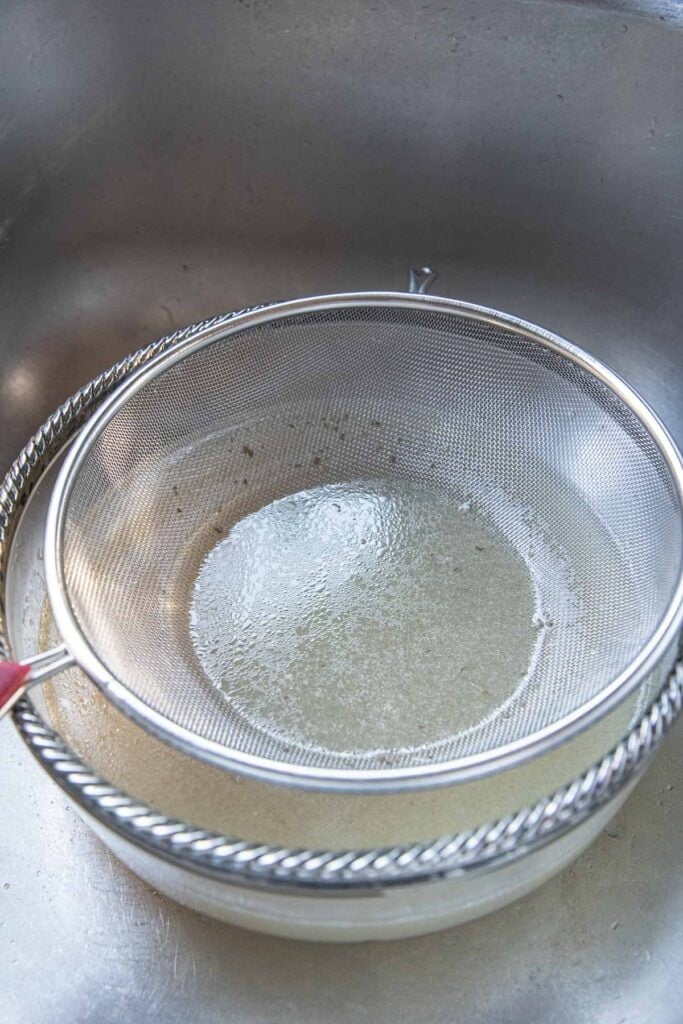
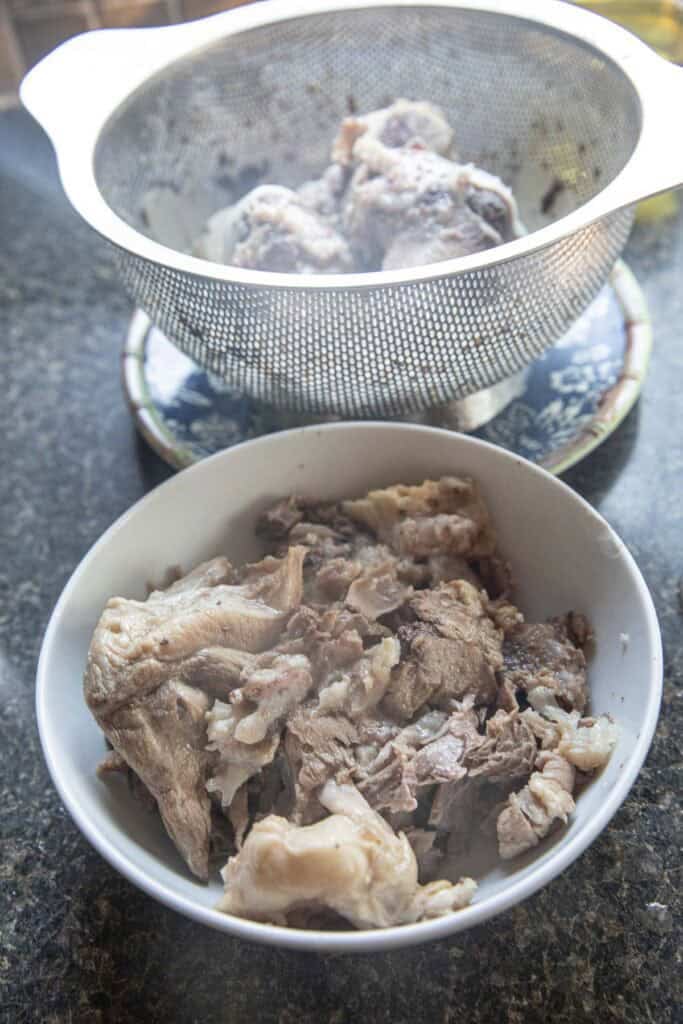
- Save the meat. Shred the tender meat from the bones and set it aside — it’s perfect for soups, salads, or just enjoying on its own with Thai green seafood dipping sauce, Trust me, that combo is so good.
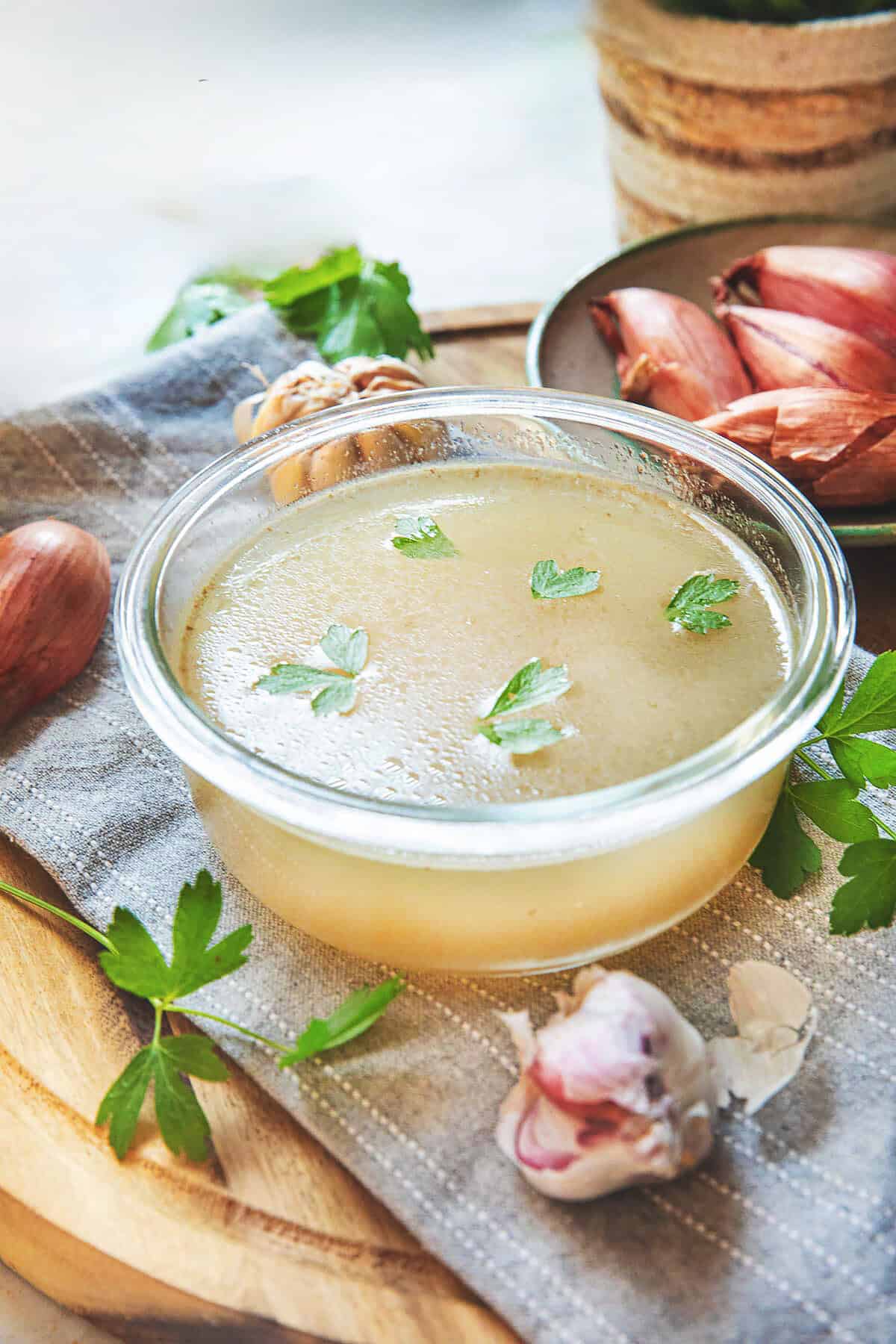
Helpful Kitchen Tips
- Start with cold water. It draws flavor out of the bones more gradually.
- Skim early. Remove foam in the first hour for a clear, clean broth.
- Simmer gently. A slow simmer keeps your broth rich, not cloudy.
- Add aromatics early. Garlic, onion, and cilantro roots deepen the flavor.
- Strain and cool. Let the broth cool before storing to avoid condensation.
- Leave space when freezing. Liquids expand — leave about an inch at the top to prevent cracked jars.
- Save the meat. Shred and enjoy with Thai seafood sauce or in soups.
- Portion smart. Freeze in small containers for easy defrosting later.
Tip: Clear or Cloudy Broth?
If you like a clear broth, blanch the pork bones first — boil them for 5 minutes, then drain and rinse to remove impurities. But if you prefer a richer, more flavorful broth (like I do), skip this step. The broth will be cloudier, but you’ll keep all that deep flavor and nutrients. It’s totally up to your taste!
What Recipes to Use Thai Pork Stock with
Use this Thai pork broth as a base for noodle soups, rice porridge, or Thai pork stew. It pairs beautifully with a splash of fish sauce, lime juice, and fresh herbs.
How to Store
- To store your Thai pork stock, keep it in an airtight jar in the fridge for 4–5 days, or freeze it for up to 3 months.
- When freezing, don’t fill glass containers to the very top — leave about an inch of space to allow the liquid to expand as it freezes. This prevents the glass from cracking or breaking.
- When ready to use, reheat gently over low heat until steaming, avoiding a full boil to keep the flavor clean and fresh.
Variation
- You can easily switch up this Thai pork stock recipe depending on what you have or the flavor you want.
- For a deeper, heartier broth, use beef bones for a rich, full-bodied stock, add chicken feet for extra collagen and a silky texture, or try lamb bones for a bold, slightly gamey twist that pairs beautifully with Thai herbs and spices.
- Each variation adds its own depth while keeping that signature Thai balance of flavor.
Helpful Equipment
Frequently Asked Questions
Yes, cook on High Pressure for 45 minutes, then let it naturally release.
You can, but the second stock will be lighter and less flavorful.
You can add a little fish sauce at the end for umami, but keep it light — it’s better to season later in your main dishes.

Easy Thai Pork Stock
- Total Time: 2 hours 40 minutes
- Yield: 14 cups 1x
- Diet: Gluten Free
Description
A rich, clear broth simmered from pork bones, daikon, and Thai aromatics — this Thai Pork Stock (น้ำซุปกระดูกหมู) is the backbone of countless Thai soups and noodle dishes. It’s comforting, simple, and naturally full of flavor.
Ingredients
- 3 lbs pork neck bones
- 18 cups water
- 7 cilantro roots or ½ cup cilantro stems
- 1 medium daikon, peeled and sliced (about ½ pound)
- 1 large onion, quartered
- 2 celery stalks, cut into chunks
- 1 whole head garlic
- 1 tablespoon coriander seeds
- 1 tablespoon white peppercorns
Instructions
- Add aromatics and water. In a clean, large pot, add blanched bones, daikon, onion, celery, garlic, coriander seeds, white peppercorns, and cilantro roots. Pour in 18 cups of fresh water.
- Simmer slowly. Bring to a gentle boil, then lower the heat and simmer uncovered for 2½–3 hours. Skim off any foam that rises to the top as needed.
- Strain. When the broth looks golden and clear, strain through a fine mesh sieve to remove solids.
- Cool and store. Let the stock cool completely before transferring it to jars or containers. Discard the solids or pick off any meat for other dishes.
- Save the meat. Shred the tender meat from the bones and set it aside — it’s perfect for soups, salads, or just enjoying on its own with Thai green seafood dipping sauce, Trust me, that combo is so good.
Notes
- Start with cold water. It draws flavor out of the bones more gradually.
- Skim early. Remove foam in the first hour for a clear, clean broth.
- Simmer gently. A slow simmer keeps your broth rich, not cloudy.
- Add aromatics early. Garlic, onion, and cilantro roots deepen the flavor.
- Strain and cool. Let the broth cool before storing to avoid condensation.
- Leave space when freezing. Liquids expand — leave about an inch at the top to prevent cracked jars.
- Save the meat. Shred and enjoy with Thai seafood sauce or in soups.
- Portion smart. Freeze in small containers for easy defrosting later.
- Prep Time: 10 minutes
- Cook Time: 2.5 hours
- Category: easy
- Method: stove top
- Cuisine: thai
Related
If you love making your own broths, try out these recipes next:


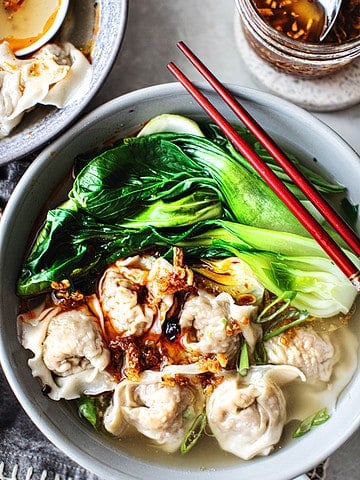
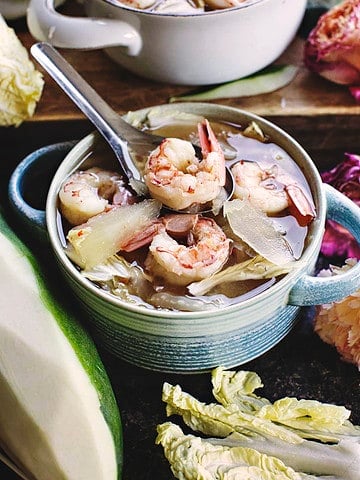
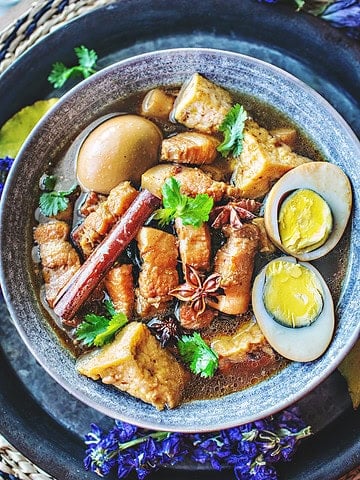



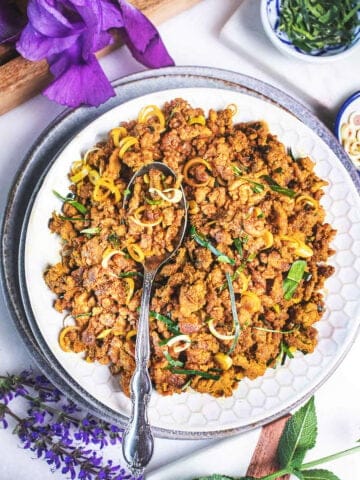

Leave a Reply